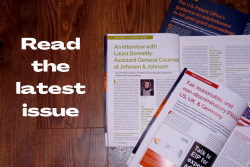In the life span of any business, the investment goes way beyond the financial aspects. It’s the years of dedication, contemplating, experimenting, and actively refining your idea of a product or service cut through the market. From the moment an idea is born, businesses pour resources into development, branding, and market positioning, all with one goal in mind: building something worthy.
But what happens to that hard-won innovation when it is vulnerable? At present, protecting intellectual property rights is as important as creating them. That’s where patents come into play. It works as a shield that protects certain ideas.
At the center of every good patent are its claims, the actual words used to prescribe what elements of the inventive concept are covered. In this blog, we will expound on specific features of the patent claims process and what you have to do to ensure that your innovation does not get copied by competitors.
Five best practices for drafting a strong patent claim
1. Use clear and precise language
When it comes to language in drafting a strong patent, compounding and maintaining the complexity of tense and accurate vocabularies should be avoided. Suppose you are inventing a new model of a smartwatch. If you stick to something general, such as a wearable timepiece with tracking capabilities, you’re getting yourself into trouble. Instead, declare what it monitors – be it beats per minute, strides, or calories, and how it does it differently.
Since the language is plain and straightforward, the arguments do not leave much room for a competitor to seize and twist in their favor.
2. Define the scope carefully
Imagine you came up with a drone that can only fly indoors with lots of small spaces. A desire statement might just flat out and describe it something like “An indoor navigable drone.” Although this gives very broad protection, it may be invalid on grounds of other similar technologies.
A more limited one could name the particular aspect of drones, for example, “A small-sized drone with ultrasonic rangefinders to enable accurate flight inside a building.” This way, you guard your invention from being turned down while claiming a large amount of area.
3. Differentiate between independent and dependent claims
For instance, the invention is a pen that can write, highlight, and act as a stylus. To restate your second claim, which is independent, it might be: ‘The key creation is described in the prior concept – a writing instrument with multiple functions.” Then, utilize dependent claims in order to provide particulars, such as “…wherein the writing instrument is an ink pen, a highlighter, and a stylus tip.”
Independent claims define the basis of the invention, while dependent claims provide those extra layers, making it difficult to replicate similar inventions.
4. Do thorough prior art searches
Suppose you want to apply for the patent of a coffee mug that can heat the coffee on its own. Such a construction may be molded before someone creates a mug with a heating mechanism incorporated by a prior art search. Perhaps an existing patent is for a mug that is heated through an internal coil and then you may shift your focus to, for example, wireless induction heating.
Collecting a large amount of information also reduces the possibility of the claim you make messing up with others, increasing the chances of your application being approved.
5. Speak with a patent attorney for complicated patents
If you have created a new, multi-functional medical device, a patent attorney or opting for litigation support services can be helpful. For instance, blood sugar, heart rate, and oxygen levels are some of the parameters that your device might be tracking live. The attorney can help produce specific statements for each functionality while simultaneously ensuring the statements are well-connected and capable of addressing all possible uses.
Where inventions are complex and have multiple aspects, the input of an expert can determine the difference between getting a strong patent that covers all aspects of an invention and a weak one with many openings.
Bottom line
Drafting strong claims is an art as well as a science. Why? It involves a combination of accuracy in identifying specific areas to be covered, the ability to forecast future developments, and, above all, strategic planning. Effective and assertive patents do much more than just protect your concepts, they enable your organization to succeed as you navigate a complicated environment.

Written by Ritu Kaushal
Operations Head, Legal Support World
You may also like…
Pravin Anand conferred with the APAA Enduring Impact Award
Pre-eminent IP Lawyer and Managing Partner of Anand and Anand, Mr Pravin Anand, has been conferred with the...
The quiet power of confidentiality clubs in SEP litigation
In standard essential patent (SEP) disputes, especially those involving FRAND (Fair, Reasonable, and...
A $10 million patent win reduced to a $1 lesson in damages
In a decision that will resonate as a stark warning to patent litigants, the US Court of Appeals for the Federal...
Contact us to write for out Newsletter














